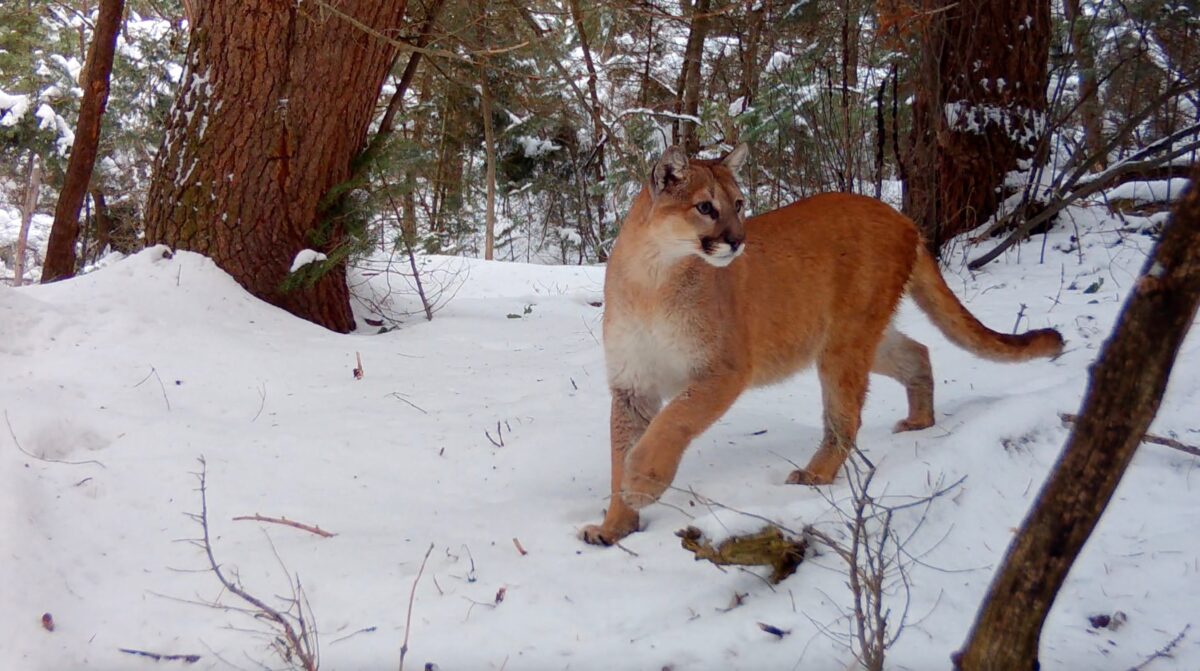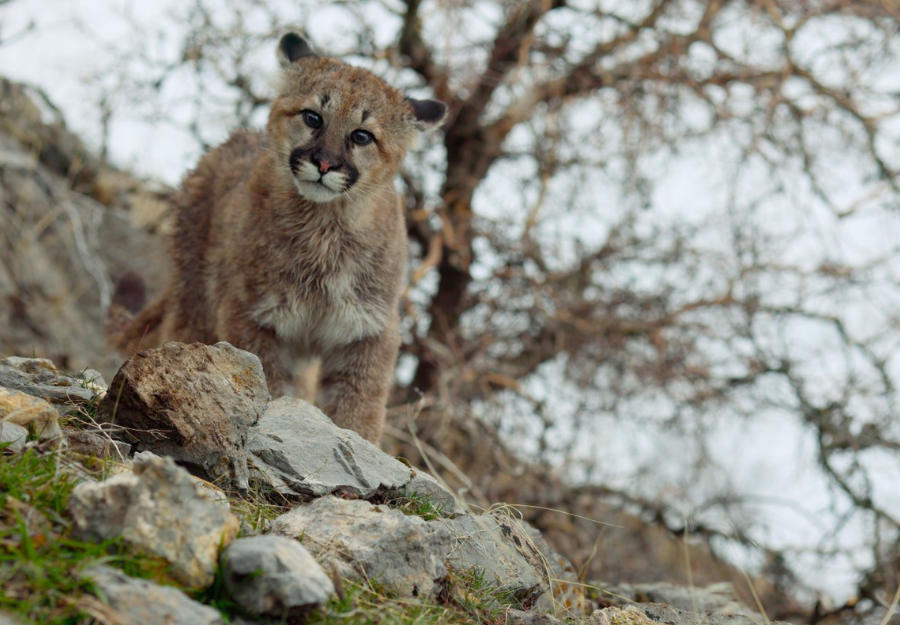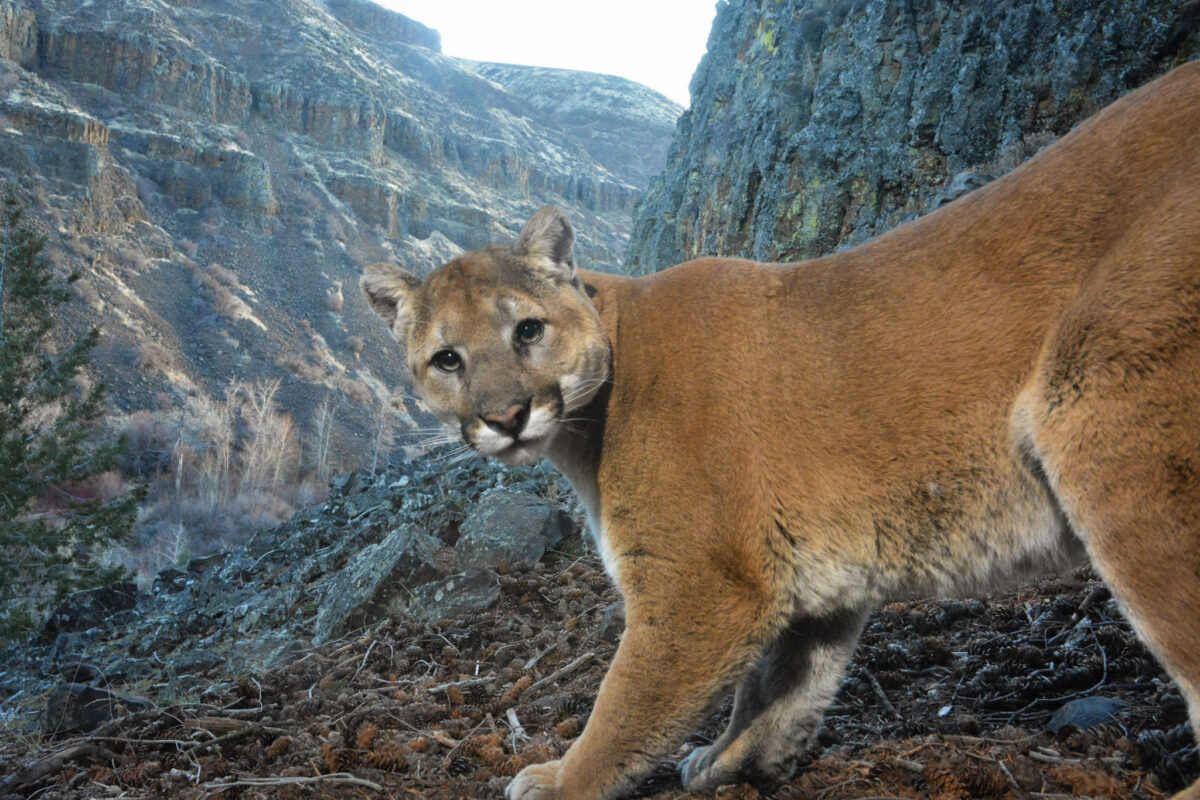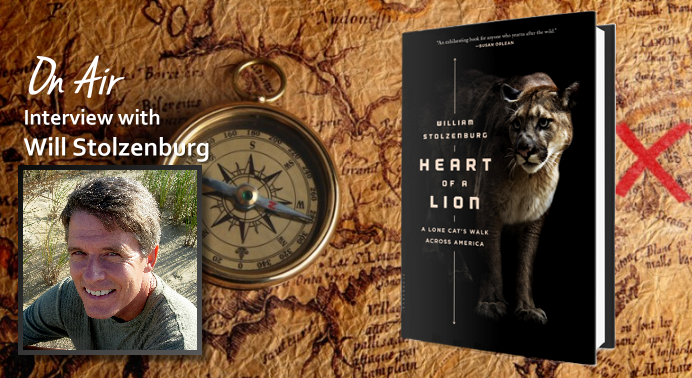
On Air with Will Stolzenburg
An Audio Interview with Julie West, MLF Broadcaster
In this edition of our audio podcast ON AIR, MLF Volunteer Broadcaster Julie West interviews Will Stolzenburg about his new book: Heart of a Lion. Learn more about the incredible journey of one mountain lion across the eastern United States, and the history of this mysterious feline in North America.
 Listen Now!
Listen Now!
Listen to the interview from MLF’s ON AIR program, podcasting research and policy discussions about the issues that face the American lion.
Transcript of Interview
Intro: (music) Welcome to On Air with the Mountain Lion Foundation, broadcasting research and policy discussions to understand the issues that face the American lion.
Julie: One of the most intriguing biological detective stories of the last century involved a young male cougar who journeyed against incredible survival odds in search of new lands and a mate. Here to shed light on his journey is wildlife journalist Will Stolzenburg. In his latest book, Heart of a Lion — a lone cat’s walk across America, Will follows the path of one individual predator — a teenage mountain lion who makes his way from the Black Hills of South Dakota to the urban outskirts of Manhattan, through a nation of people who haven’t lived among his kind for more than a century. The lion’s tale is part romantic tragedy, part heroic quest, and a lens upon the society through which he journeyed. Will has written widely on all forms of life, from microbes to elephants, but for the past ten years has been focusing on that particular class of creature we call predators — animals who regularly kill and eat other animals to live. He is also the author of Where the Wild Things Were, a story of scientific discovery, and the irreversible role of predators in the web of life. I’m joined in the studio with Will today. Hello, Will! Welcome to the Mountain Lion Foundation.
Will: Hi Julie. Great to be here. Thank you.
Julie: Well this young, ambitious male cougar traveled more than 2000 miles in little more than two years across the Eastern two-thirds of America spanning six states, but the puzzle pieces weren’t really known at first. You write that, “His incredible saga emerged from the molecules.” What were those puzzle pieces, and how did that story emerge?
Will: Yeah. Those molecules are . . . what I am referring to there . . . is the DNA that was collected along the way, and this is what made his trail so clear, as it were. And this is an animal . . . the other thing that makes this so incredible, is that this animal did not have a collar on him. This animal was unmarked. And he started off from a colony of animals — of mountain lions — in the Black Hills of South Dakota, where many animals are being collared and trapped, but he was not one of them. But yet, he managed to leave little bits and pieces of himself all the way across the country, which was really an astounding coup for science because, again, this was the first time an animal had, untagged, traveled this far and be able to be tracked by science. He was first discovered by video, and he was discovered several more times by video and hidden cameras along the way. We have all sorts of evidence of this animal’s journey, which, again, makes it such an incredible scientific story of discovery.
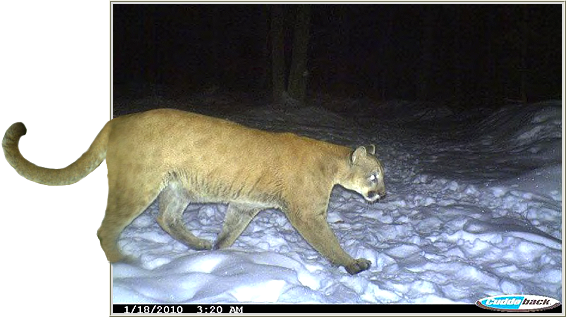
Julie: Right, yeah. And I loved reading about people in Minnesota, or Wisconsin who might have discovered little pieces of the puzzle . . . some scat and bits of fur . . . blood drops in the snow. But it wasn’t until the Rocky Mountain Research Station, the genetics lab you were referring to, began to help us know that it was one and the same cat!
Will: Yeah, and that came back as a big surprise because what happened was that he started . . . we don’t know . . . we didn’t have any record of him leaving the Black Hills. His first appearance was in a little town west of the Twin Cities called Champlin, Minnesota. He appeared on a video cam. After that, he started making all these appearances as he started heading east. And he eventually crossed the line into Wisconsin and left a bunch more evidence of himself there. As you say, some of it was scat-feces, some of it was hair, tracks, and more pictures of himself that he takes with these automatic trail cameras that he happens to trigger along the way. But then he disappeared. He disappeared for a long time, where we believe he headed into Canada and may have traversed the province of Ontario. And so there was like a six-month gap where this was all this talk about this cougar marching across Wisconsin, and he disappears. When he finally reappeared again, it was really hard to connect those dots. That’s when, we got the next DNA evidence of him in New York and then again in Connecticut and, boy, that’s when — as the proverbial feces hit the fan, right — when people realized that this animal was the same one that they had been originally tracking way back in the twin cities of Minnesota.
Julie: Right. And part of the intrigue of the book is, at points is the cat vilified, and at what points is the cat seen as a hero. And that really does change depending on who you’re talking to.
Will: Absolutely, yeah. One of the surprising things about this cat, I think, for people who really don’t understand the journey, is that if you look at it just in terms of the mileage he covered, you can look at it as a straight line shot and say, well it’s 1500 miles from the Black Hills to Connecticut — big deal, we can all walk that far.
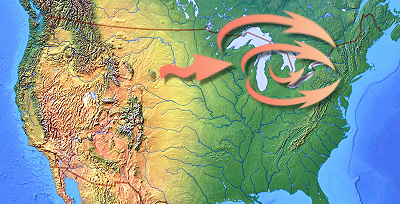
But if you consider the dangers that this animal traversed. The societies that hadn’t seen this animal for so long — for centuries in some cases — these are people who are not familiar with such an enormous predator walking through their town, right? So you can imagine there’s an automatic reflex of fear. The police departments were not equipped to deal with him. It was really an amazing feat that he managed to make it as far as he did without getting killed — either by . . . without getting run over, or shot by a hunter or shot in town by police who were protecting their citizens. It was really an incredible feat for him to have wended his way through so many societies in some of the thickest knots of humanity in the country before finally meeting his end.
Julie: Right. He traversed highways, and he was in suburban neighborhoods, and he forded rivers. There is one instance you describe of — I guess he’s at the border of Canada and he’s got a choice to go down these rapids. Was it the Saint Mary’s rapids? Remind me, what area of the country is that?
Will: Yeah. The Saint Mary’s River. That’s the one that straddles the border between Canada — Ontario — and the United States — the upper peninsula of Michigan. This is high on speculation as to what he did here. We know, or we have a good idea that we last saw him moving into the upper peninsula of Michigan by trail camera. We lose sight of him, like I say, for another six months after that . . . but in trying to retrace this animal’s path, it is most logical that he went north rather than south.
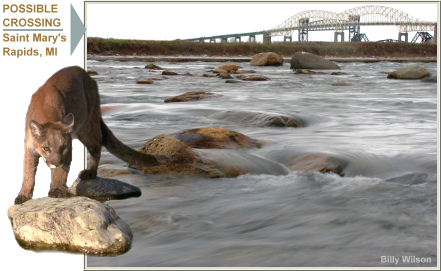
South would have had him going through just a horrendous line of a big desert of agriculture, if you will — big blue collar cities. It’s been a death pit for many of his predecessors. Most biologists think, just to imagine this cat to have made it, he must have gone north. And he came to this river, the big river that separates the countries, which now has a series of locks through it to allow gigantic shipping vessels through there. What we suspect that he did is that he went down river somewhat and came to an archipelago of islands, and used those islands to step his way, swim his way, if you will, across the big river and into Canada. So it’s very likely that he made his way across that great river by hopping those islands. That’s the one piece of the puzzle I wish we had more information on, because the next time he appears is in northern New York in Lake George.
Julie: Right! And that he was able to be so stealthy for so long. Wow! Well, one thing that makes this books so intriguing, aside from the mystery itself of how he came to be in New York, is the way you’ve structured this book. You don’t just tell a linear tale. You double back and give a lot of history — going back to the Pleistocene era of saber tooth cats, and the spear wielding Clovis people, and the government’s role in the 1800s eradicating predatory vermin and up to contemporary South Dakota hunting policy. What were some of the challenges researching this subject, and what about the historical piece did you feel was necessary in providing a critical backdrop to his story?
Will: Well in addition to the incredible journey itself — just making it from point A to point B across the land that he did, there is the historical backdrop that speaks to his race, his species of cougar that has done this thing in history several times before.
I’m talking now on a much grander scale. Mountain lions have had it tough from the very get go. It used to be, back in the Pleistocene — there were a lot of big cats in this country that were much bigger than them. Believe it or not, they were the smallest of the great cats in this country at one point. There were saber tooth cats. There was an American lion. There was this whole suite of giant cats. And yet somehow he survived them. And all of them went away except he and the jaguar — he or she, I should say. But mountain lions and jaguars were the only two of the great cats that survived that.
There’s a lot of speculation on what happened to all of the great beasts. A lot of people think that it was the Clovis people who came over 14,000 years ago. But that’s just to set the scene to say that mountain lions have survived a lot in the history.
And they survived another coming of great strife when the European settlers came in the 1800s. There was warfare pretty much — a national war against the great predators. And even though the wolves and the grizzlies were, for the most part, driven from just about all the entire lower 48, the mountain lions managed to survive by their stealth. They were driven to the last hold-outs high in the Rockies. And a few of them managed to survive. And when finally the pressure relented, they were able to come back. So they had another success story, and a big one at that, in that they managed to reclaim a lot of their range in time. But that being said, there was a whole big chunk of it they have not reclaimed, and that is, the eastern two thirds of North America, which they used to inhabit when the settlers arrived here.
These are not animals out looking to attack us.
This is the backdrop against which this animal — this singular animal, the Connecticut lion — is marching through. He’s marching through a land that hasn’t seen his kind now for a century. That’s one of the problems — one of the reasons why these animals are so endangered where they’re venturing into these new lands is a lack of familiarity. It’s people not knowing how to handle these animals, and so it makes the trip a lot more hazardous. And so it was necessary to put all these pieces together to show — not only what came before this lion, but what was facing him on his trip across.
Julie: I was interested in reading some of the historical documents that you present. I was surprised to read how many of them recorded the cougar as being a shy creature. In fact, you quote William Byrd, the founder of Richmond, Virginia, which happens to be my hometown, as saying, “As formidable as this beast is to his fellow brutes, he never has the confidence to venture upon a man, but retires from him, with great respect, if there be a way open for his escape.”
And then Maurice Honocker echoes these same things in what he and his team of wildlife biologists have noted. And again and again throughout your book this is echoed. Yet, this isn’t being communicated to the public or the people who are in the position to make policies around hunting aren’t choosing to communicate this to the public — so there’s this schism.
Will: Yes, absolutely, and that’s one of the great injustices to this cat that, I think, needs correcting. And I’m not sure that this is going to do it, but I hope it’s a step. But, yes, as you said, just about any serious lion biologist will tell you the same thing. These are not animals out looking to attack us. Unfortunately, the ones that get all the press, the ones that get all the notoriety, are that rare, aberrant aggressor that’s not like all the rest, and does attack somebody, does eat someone’s pet, or God forbid, kill somebody. But these kinds of things happen with such infrequency, that there’s really not any common sense in going out of your way to avoid mountain lions or shooting them because you’re afraid they’re going to attack you. That’s been proven over and over again. And, like I said, the biologists have been watching these things for so long now. What they have now, and one of the miracles of telemetry, is that they can actually, from afar, plot these animals — where they’re hanging out — hour after hour — day after day, and they’re finding that they are very invisibly making their way through our societies. They are hanging out near trailheads where people can’t even see them, and yet hundreds of people are walking by without realizing it.
As several biologists have told me, if they really saw us as prey, there would have been a lot more carnage out there. We’ve known about the behaviors of these animals now for 40 years. There’s some new stuff coming on board, but there’s a lot we’ve known for a long time, and we could have been managing them differently, but there is a failure to accept the science. A distrust of it, I don’t know. I’m not sure how to describe the sociology of it, but out there in places where these animals do live with people, with ranchers, in particular, there is just this basic distrust that these animals are out there for them, for their children, for their livestock, and no amount of science seems to be able to dissuade them. And that is basically the sort of attitude that is behind a lot of the management that we see in the west now except for California, which is the one state that does have cougars but does not shoot them for sport. Julie:You make a connection, also, of different studies that really show the social order among lion populations — Dorothy Fecske, and I guess she had a colleague, was it Daniel Thompson, who looked closely at individual lions and their social order. And I was fascinated at the conclusion that the more you kill, the more you disrupt that social structure, the more chaos you really do have on your hands, because you need those elder lions in place to keep that social structure. Maybe you could talk about that for a little bit.
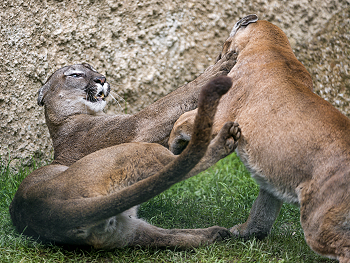
Will: That is what the best science that we have now is telling us. These studies were conducted, for the most part, in Washington State, that were looking at that very issue. They wanted to know what impact does sport hunting have on these complaints — complaints of problem lions, if you will. What they found is exactly that. They found that the more you shoot lions, or the heavier you hunt them, the more complaints you get, the more supposed conflict you get. And what they decided was that what they were doing was shooting holes in this very stable society of lions. These lions that are self-policing; these are lions that don’t need to be shot to control their populations. They control their populations themselves.
They’re controlled by these large males who commandeer huge areas, and they try to gather two or three females and territories underneath those and basically control those for mating, for their prey, and any other lions wanting in on that . . . they’ve got to fight the ruling male. There’s a lot of strife in cougar society, and a lot of cougars kill each other over the rights to these females, or the rights to these territories. It’s a very territorial society that limits these populations. So when you go in there and just start willy-nilly shooting these animals, as what happens when you’re sport hunting, a lot of things happen. You get rid of some of these males — these older, bigger stronger males that are maintaining the fabric of society.
You shoot holes into that, and others — the younger ones then — are coming in. It’s the youngsters that tend to be the ones that get in trouble. These are the ones that are not as well trained. They don’t quite know how to hunt as well, and so they’re the ones more apt to try for easier prey, such as a sheep or hobby llama or something like that. These are the ones that tend to get in trouble because they haven’t yet learned the ways of a wise mountain lion. To become a wise mountain lion, or to become an old mountain lion, anyway, you have to be a little bit wise. This is the weeding process. What happens when you start shooting these animals? You start introducing chaos into this otherwise orderly society.
Julie: In light of all the evidence that sport hunting disrupts the lion populations and creates more chaos, I think about what you refer to as the Kaibab catastrophe. Maybe you could explain what that Kaibab catastrophe is and why that’s relevant for contemporary sport hunting considerations.
Will: Yeah, the Kaibab legend. At one point, the Kaibab — and, again, this is the north rim of the Grand Canyon — it’s high ponderosa pine ecosystem — was turned into a national game reserve by Teddy Roosevelt. What it was mainly there to protect was this glorious deer herd. People used to drive up there in their old automobiles and just marvel at all the deer. Well, the reason that there were so many deer up there is that, after the place was protected, they went — the managers decided — well, what we really need to do to make this the best game reserve is we’re going to eliminate all the predators. And so they shot out all of the wolves, they shot out as many of the cougars as they could and, lo and behold, the herd grew to these fantastic numbers. Of course, we know now through Aldo Leopold’s eloquent writings about what happened there, is that basically these animals reached a critical mass, they ate themselves out of house and home, they had a couple of bad winters, and thousands upon thousands of them starved en masse. This was the cautionary tale of what happens after you eliminate the predators. They’re there for a reason. They are the shepherds of the deer herds, as my colleague Chris Spatz likes to call it. And when you eliminate them, there are repercussions. And one of the repercussions is that you actually kill the golden goose, if you will. You kill the very deer that you were out to save by eliminating the predators.
Well — Leopold was one of the first to grab hold of this idea, and he went around and looked at areas across the country where the deer herds were exploding and where they were eating themselves out of their own rations. And lo and behold, he found that every one of them had been preceded by some kind of predator eradication campaign. And so the idea was that here’s the lesson that we need to learn. Unfortunately here we are in the 21st century, and so many of our wildlife managers haven’t quite learned that.
Julie: You highlight Yellowstone and the reintroduction of wolves in Yellowstone. What’s potent about the Yellowstone story?
Will: Well the Yellowstone story is big because it is — well, number one, it’s Yellowstone. And everyone knows Yellowstone. It’s one of the most famous national parks. It’s also got a rather controversial history in that, it, too, underwent a predator eradication campaign in the early 1900s. And, it too, had an enormous population of ungulates as a result of it — ungulates being the hoofed animals, and in particular, the elk of Yellowstone National Park. If anyone has ever been there, I’m sure you’ve seen these huge herds of elk, and they’re a marvel to look at. The other thing that wasn’t well appreciated about all these elk is that they were eating the resident trees down to ankle height. They were basically destroying the next generation of forest along the streamsides of Yellowstone. The other thing about Yellowstone is that it is so popular that when they did finally reintroduce wolves — this came about in the winter of 1995/1996 — they introduced wolves from Canada. The wolf experiment turned out to be more successful than had been anticipated. The wolves multiplied like crazy. They filled the parks with their packs, and scientists were there to take note. And this was such a huge stage because, again, this was Yellowstone.
We’ve got before and after. We’ve got before wolves, after wolves. And they were there to start gauging the results. There are all sorts of correlations that have been proposed as to what the ecological impact of those wolves has been. And for the most part, it has been a greening of Yellowstone. A return of some of the willows, a return of some of the cottonwoods, some of the most important trees in the park, a return of a lot of animals that depend on these ecosystems. The idea is one that has been shown in many ecosystems around the world by now, and it is gathering steam as we sit here, and that is — that to remove these top predators from the order of life is to invite chaos . . . it is to decrease the diversity of life. It is to, essentially, affect everything opposite of what most people would have expected by removing these evil enemies of wildlife.
Julie: Some people would say — let’s take that concept and introduce predators, like cougars, to the East. Is that possible?
Will: Well . . . it remains to be seen. We have pretty good information. “We,” I mean certain scientists — John Laundré is chief among them — who have done the calculations in terms of road densities and prey densities and what not and found that, yes, indeed. We could have populations of mountain lions in the East once again. There is plenty of space for populations of mountain lions. Now whether or not we have the social carrying capacity, they call it — whether or not we have that — remains to be seen. Whether or not people are willing to allow these animals back into their wilderness areas in the east.
Julie: I was talking to a wildlife biologist here at Colorado State University who studied tigers and leopards and human-carnivore dynamics in India, and he was saying, you know, you can have all the good science possible, but it takes a culture of values to really turn the gear.
Will: Yeah. It’s a matter of what we the public really wants because we have what it takes to have cougars in the Eastern United States. We just don’t know if we have the political will yet.
Julie: Let’s look to California, which seems to be such a shining example of lion-human co-habitation. You say in your book, “Mingling the most lions and most people of any state in the Union, California had offered itself up as the nation’s grandest experiment in lion coexistence.” And they seem to be succeeding, is that right?
Will: Yeah, they certainly do. Not to say that there haven’t been a few hiccups and a few problems there, but, no . . . they are showing the way. By the way, they don’t have sport hunting in California, and they have an awful lot of people, and they have the most mountain lions. Again, it’s a great place for experimentation to test these ideas. Although the rationale for most of the states who shoot their lions is that we need to shoot them, or else they’ll take over the country and eat us all. I’m exaggerating, of course, but that has actually been said. What California shows is that that is not the case. We have animals — one in particular in the news these days you may of heard of is P22 — the Griffith Park lion. He is living in the middle of Los Angeles in an eight square mile park in Los Angeles. And he only recently caused a little bit of trouble.
Apparently he ate a Koala out of the zoo. But that is the first hiccup in that lion’s stay there, and he’s been there for several years now, again, surrounded by 10 million people. This is one of the finest ambassadors to come by since . . . and I have to give note here to my Connecticut lion, but yeah. He is an example of how people in California — they’ve been living with lions now for many, many years now. A lot of them have gotten used to it. A lot of them are fine with the idea that they are hiking the same trails as mountain lions. They know that here is how you behave in mountain lion country. You know that there are certain times of day you maybe should be more careful. There are certain dogs you shouldn’t take on the trails. For the most part they realize what most biologists who have spent a lot of time with these lions realize, and that is that they’re not going to be a danger to you. If you take a certain amount of precaution, there is nothing to worry about, and they are actually very, very good neighbors. And California is proving that right and left. And, again, it’s an example that’s kind of befuddling as to why a lot of other states are not looking at that and saying — gee — maybe this is the way to go.
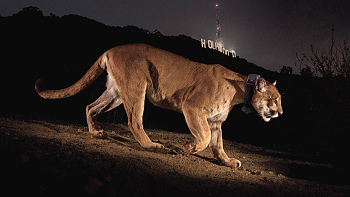
If you talk to the people who are managing the lions in California, they will tell you that they have never had a problem either tranquilizing them or letting a lion go its own way. There are alternatives, again, to the lethal alternative that every time a lion comes to town, he needs to be shot. California is the exception to that; they’ve shown that to be false. But, again, California has had some time with their animals. A lot of these other places have not. We can only hope that maybe with time, and if enough lions are actually able to survive in these parts, that the locals can calm down — can learn a better way of living with their neighbors.
Julie: So many young, juvenile male lions disperse from the Black Hills of South Dakota. What is the significance, geographically speaking, of the Black Hills to these lion populations?
Will: Well the significance is for . . . when you consider the possibilities for Eastern cougars to return, is that this is their closest departure. This is the last of the . . . the mountain lion population essentially ends at the Eastern edge of the Rockies in this country. And so any lions that are going to make it East are going to have to come from there, unless they’re going to come north from Florida, and that’s not happening because of a river that flows between them. But, if they’re going to make it east from the Rockies, they’ve got to come from the easternmost port. And that would be right now, the biggest population farthest east, is the Black Hills.
It’s this little island sitting out there a hundred miles east of the last range of the Rockies. And we have a population of lions there now . . . maybe 150 maybe 200 lions. Those are the animals that, for the most part, are sending these scouts our way. These scouts are not the majority of lions in that population. Most of the lions that are leaving that population are heading west toward true cougar country. But a few of them, for reasons we don’t know, are heading out into the prairie. And they can’t be doing it for line of sight seeing another great sanctuary out there along the way, they’re just for some reason instead of heading West, they’re heading East. This is what happened to our cat, and this is what happened to dozens of cats over the last decade or two. They’re heading East because they just haven’t figured out any other way to go. They’re heading East with the idea that if they just keep going far enough, they’ll find what they’re looking for, which is another female lion. The tragedy is, and this is what our lion proved, is that there just aren’t any other lions out there for them to meet.
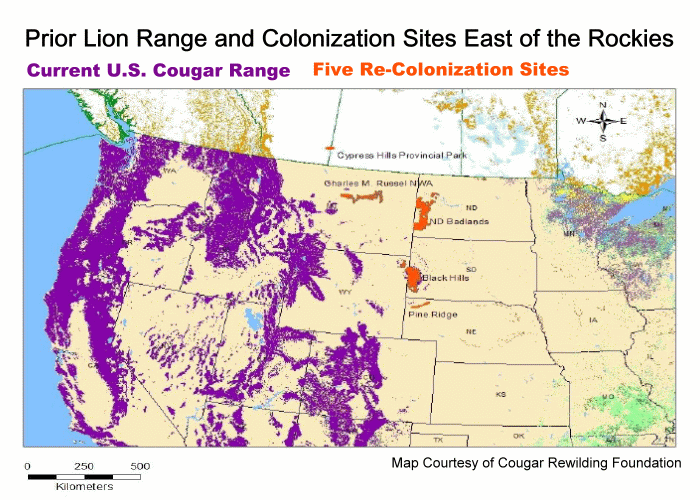
Julie: What about S. Dakota, where do they stand now in their track record after this legacy of increasing the hunting count year after year after year?
Will: Unfortunately, they’re kind of getting what they set out for. They set out to reduce the population. Some were arguing that they wanted to eliminate it. But the Game and Fish will tell you that they’re not out to eliminate, they’re just out to reduce. It appears they’ve done that. They have not been able to meet their hunting quota for several years running. There’s usually an excuse behind that — that the tracking conditions weren’t good or this or that, but the fact is, they have not been able to reach their quota. They’ve been setting these high quotas for several years now and, basically, there aren’t enough cats out there left out there to shoot. I think they’ve seen . . . (laughs) — and yet they’re not backing off. Their quotas are still probably 10 or 20 animals higher than what they’re getting. So it remains . . . I guess the question remains, “Why are they continuing with these high quotas”?
I think if you wanted to look a little deeper, you could find that there are actually two entities who are doing a lot of the bidding for what stands as management in the west, and that is there is both a Game and Fish Agency, which manages the sport hunting of animals, and then there’s a wildlife commission that oversees them, and the wildlife commission is almost never made up of biologists. In fact, in general, it’s made up of people who don’t have any biological training. And they’re the ones who OK the plans as to how many cougars we shoot. Unfortunately, those commissions are often made up of ranching and sporting interests, which very, very seldom include the interests of mountain lions.
Julie: So there hasn’t been a cougar, presumably, in the East for centuries, and yet there are many urban legends that exist of people thinking . . . being convinced they’ve seen them. What are some of the fun stories you’ve collected along the way that kind of tickled you?

Will: Oh gosh. You know, I could have filled a couple more books just of the stories of Eastern cougars. This animal . . . I think it just goes to show what a tremendous pull they have on the human psyche because you can go to any Eastern state in the United States, and you can go to any gathering of people, and you can stand there and say . . . how many of you people have seen, or heard or heard of a mountain lion in your neighborhood or in your state or in your community, and inevitably, a third of the people are going to raise their hands and say, “Yep. I’ve either seen one directly, or I know somebody who’s seen one, or I know somebody who knows somebody who’s seen one.” It is this incredible metaphysical mystery of these ghost cats, they’re called.
There’s this mystery going. What is it out there that people are seeing? A lot of it could be mistaken identity. A lot of really good naturalists have been embarrassed to find out that they’ve been tracking a dog, or a deer, or a golden retriever is a commonly mistaken animal for cougars. Real cougar researchers will decide on whether or not there are cougars in an area. Are we getting evidence . . . real DNA evidence that these are, indeed, cougars, and number two — kittens. You can’t have a population of mountain lions without males and females and then, kittens. Lo and behold, we don’t get any reports of kittens out here. That kind of just seals the deal in terms of what we’re looking at.
Julie: What about the way you went about researching this book. What were the sources, and how did you stitch together this whole mystery novel?
Will: One of the things I did . . . of course I got what we know . . . I gathered as much information as the scientists know of this animal as he came through. That was the easy part. The tough part was the fact that he spanned two thirds of this country, and he stopped along the way in many places. So there is a history to every one of those places. And so this one single journey turns into many single journeys. All these detours and diversions from every place he was. And there are incredible, fascinating histories to go with every one of the places. Part of the problem of writing this story was where to stop, because you could of kept going in any direction outward, wherever he stopped, because, again, there’s such a huge wealth of cougar lore out there — cougar history, that one could have followed. So the big task was keeping on track- keeping to the path, if you will, of this cat as he went through.
Julie: And you actually visited some of the places where the cougar made an appearance.
Will: Yeah, I tried to put myself in the cougar’s footsteps. I tried to go to places where we absolutely knew he was standing. I tried to go there in the time of year in which he was known to be there. And just have a look around, imagine the landscape, imagine what this animal was facing and maybe feeling as he was going through this very alien terrain to him. And it was really instructive. Of course, he didn’t always pick the nicest times to be going through areas. I mean, Northern Wisconsin in the middle of the winter can be a pretty cool place — same with Minnesota. He did pick a nice time to wind up in Connecticut. He wound up there in June, so that was nice. But, yeah, this animal . . . trying to walk in the footsteps of this animal was both fun, and it was challenging at times.
Julie: It must have been really exciting to interview some of the people who had actually seen the cougar in Connecticut.
Will: Yeah, that was really special. To actually . . . to visit with people and to be standing right there on the other side of a sliding glass door where that lion had walked within three feet of the person watching him was just really special. To stand at this footbridge where someone with a camera was standing there trying to take this guy’s picture not realizing that the camera had been turned off but actually just a few strides from this animal.
…he may have died at the end of the line, but look at how far he went. Look at the land that he traversed. Look at all the lessons he left us with. […] He died for a good cause. He really showed us what good neighbors these animals can be.
To imagine that in the heart of southern Connecticut — to be standing that close to a 140 pound mountain lion . . . I mean, again, it was a year or two removed from the time he was actually there, but it was palpable. You could feel that lion standing there.
Julie: Right. You talked about needing actual evidence of a cougar’s presence in the East, and I think that’s where so many of these people who were telling their urgent urban lore about having seen one, maybe felt vindicated when there really was evidence. Like I told you so! See! But, ultimately, what was really missing were the females. And this lion was found in Connecticut because he was in search of a female, and he never found one. And so in that regard, I guess this really is a — well a love story, or he was biologically compelled, I guess, to find his mate. And there’s such sadness in that, I think — that he didn’t find her.
Will: Yeah, that’s true. There is sadness in that. That was one of the dilemmas for me in how to structure that story because I didn’t want it to be such a dark and gloomy ending as that, but that is the way it ended. But then there’s also this idea that, you know what, he may have died at the end of the line, but look at how far he went. Look at the land that he traversed. Look at all the lessons he left us with.
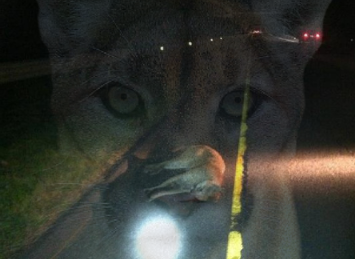
The fact that this animal was able to go at least 2000 miles and probably two to three times that if you consider all his wanderings. He was able to go that far, and he never harmed a soul that we know of. He never caused any trouble. He was one of the most wonderful ambassadors we could ever hope for in terms of those who say — look — it’s time to rethink having cougars back in our country again, because, guess what. They are good neighbors, and this cat is proof of that. And so I take that as the take home message. Yes, he died, and if it’s possible to say this: He died for a good cause. He really showed us what good neighbors these animals can be.
Julie: Well Will Stolzenburg, thank you so much for the interview today.
Will: You’re quite welcome. Thank you, Julie!
Closing: [music] This has been a Mountain Lion Foundation On Air broadcast. On Air is a copyrighted production of the Mountain Lion Foundation. Permission to rebroadcast is granted for noncommercial use. For more information visit mountainlion.org.



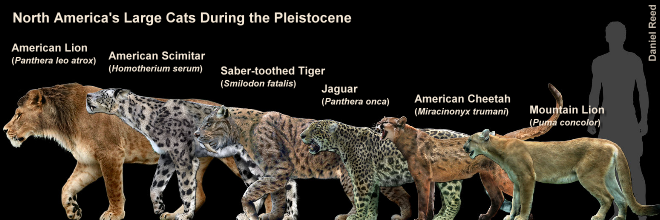

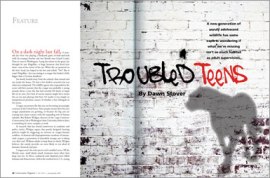
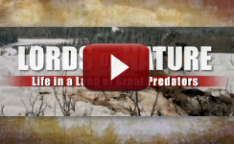
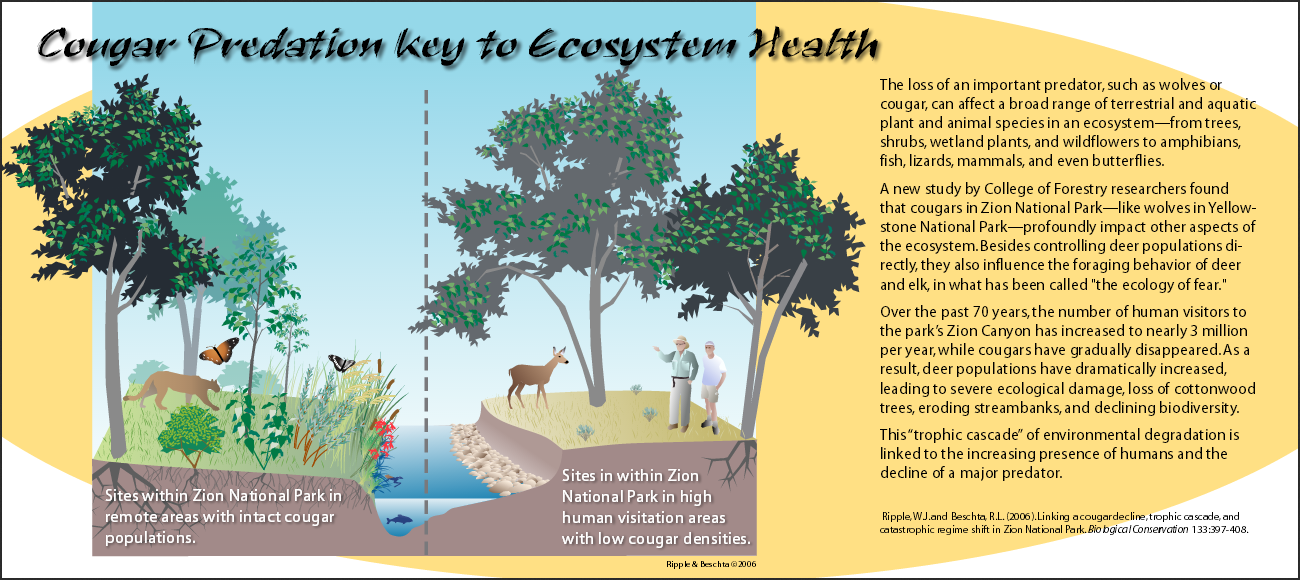
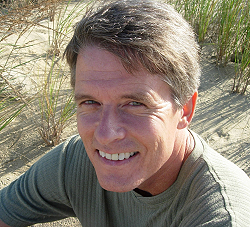

 Facebook
Facebook Twitter
Twitter Send Email
Send Email